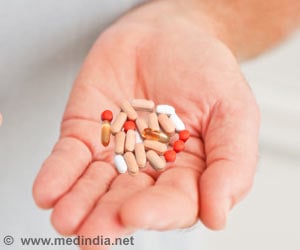The annual death rates among men and women who are alcohol dependent (AD) is 1.9 times and 4.6 times higher when compared with the general population.

"Clinical data have revealed a higher proportion of individuals who have died than among the general population of the same age," explained Ulrich John, professor of epidemiology and social medicine, and director of the Institute of Epidemiology and Social Medicine at University Medicine Greifswald, Germany. "Gender-specific data are rare, even among clinical samples. Furthermore, these studies have two main limitations. First, we know that only a minority of AD individuals receive treatment of this disorder, but we lack knowledge about how this selection occurs. Second, we have no evidence about potential effects of specialized alcoholism treatment on mortality among people who had been diagnosed as AD. We would like to know whether treatment might enhance survival time. For ethical reasons, no controlled trials are possible. Thus, longitudinal descriptive data as in this study are helpful."
John, the corresponding author for the study, added that Germany is well-suited for this kind of research since it is mandatory in that country for residents to provide vital status data. "Our data are also of international interest because researchers used the Composite International Diagnostic Interview (CIDI), which is an internationally and widely accepted instrument," he said.
John and his colleagues used registration data to gather a random sample of 4,070 respondents between the ages of 18 and 64 years from a region in Germany; of these, 153 were identified as AD and, of these, 149 (119 males, 30 females) were successfully followed for 14 years. Baseline data included information garnered using the German version of the CIDI, AD diagnostic criteria from the Diagnostic and Statistical Manual of Mental Health Disorder – Fourth Edition (DSM-IV), and any other psychiatric disorders according to the DSM-IV. Possible predictors of mortality included AD treatment utilization, AD severity, alcohol-related problems, and self-rated health.
"First, we found that annualized death rates were 4.6-fold higher for females and 1.9-fold higher for males compared to the age- and gender-specific general population," said John. "Second, we found that the mean age at death was 60 for females and 58 for males, both of which are about 20 years lower than the mean age at death among the general population. None of those deceased had reached the age of life expectancy. Third, having participated in inpatient AD treatment was not related with longer survival compared to not having taken part in treatment, meaning that it did not seem to have a sufficient protective effect against premature death."
John expects that future studies will support the finding that females with AD had much higher annualized death rates compared to AD males in the general population. "We already know females tend to respond much stronger to toxins such as alcohol than males," he said. "Women also seem to develop alcohol-attributable disease faster than men do. On the other hand we have only little knowledge about alcohol-attributable disease among women, since in most samples females constitute just one fourth to one third of the sample."
In short, said John, drinking seems to contribute more to very early death more than other main risk factors such as tobacco smoking. "For example," he said, "smoking-related death cases are more due to cancers which seem to occur later in life than many alcohol-attributable causes of death do. Furthermore, drinking can also contribute to other risky behaviours such as smoking, becoming overweight, and obesity. Alcohol is a dangerous product and should be consumed only within guidelines, no more than 12 grams for women on occasion and no more than 24 grams for men."
Source-Eurekalert
 MEDINDIA
MEDINDIA




 Email
Email










